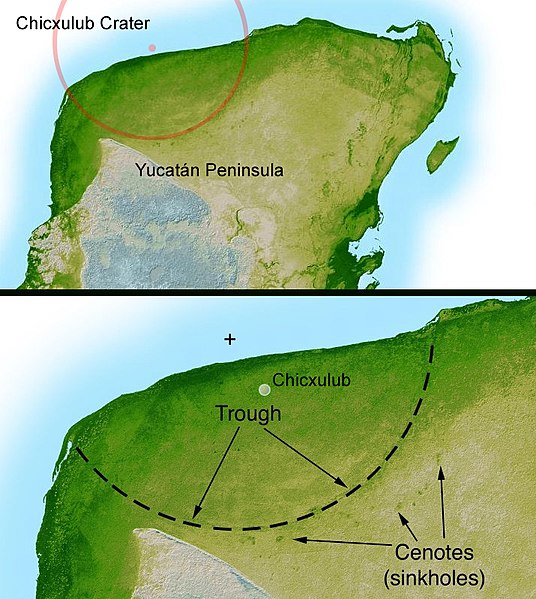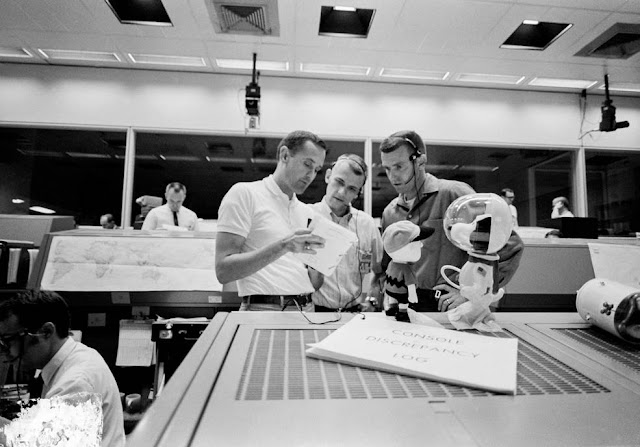Asteroid Watch.
May 18, 2019
Asteroids are out there, even if you can't always see them.
Image above: Artist illustration of the asteroid Apophis making a close flyby of Earth. Image Credit: European Space Agency (ESA).
Want some naked-eye proof? It's coming, in the form of a mountain of space rock named Apophis, for the Egyptian god of chaos; his task is to prevent the sun from rising.
Stretching three-and-a-half football fields long, Apophis will cruise within 19,000 miles of Earth—the closest this large an asteroid has come in recorded history. Apophis will swing inside our ring of geosynchronous satellites on April 13, 2029.
And yes, that is a Friday.
Animation above: This animation shows the distance between the Apophis asteroid and Earth at the time of the asteroid’s closest approach in 2029. The blue dots are manmade satellites orbiting our planet, and the pink represents the International Space Station. Animation Credits: NASA/JPL-Caltech.
But don't worry, NASA has it all figured. Any bad luck that may befall you on that day won't come from Apophis—probably. An earlier worst-case prediction that gave a 2.7 percent chance of Apophis striking the Earth has since been downgraded to practically nil. Actually, that's an upgrade.
Apophis is a Sparkle in NASA's Eye
In fact, NASA scientists look forward to Apophis' near miss. Given a decade to prepare, NASA might even send a robotic probe to rendezvous with the rock. At minimum, it's an incredible opportunity to make close-up observations of a large asteroid. Apophis is large enough, and will be close enough, to see with our bare eyes, so Earth-based optical and radio telescopes will have an unprecedented view of the spectacle.
Image above: Astronomers discovered asteroid Apophis on June 19, 2004. At first, when its orbit was not well understood, there was brief concern it had the potential to strike Earth in this century. Image Credits: UH/IA/NASA.
At the 2019 Planetary Defense Conference held in Maryland this April, scientists brainstormed all the possible ways to take advantage of a flyby that others might see only as a narrowly averted disaster.
NASA has used radio telescopes before to produce rudimentary images of some passing asteroids, though these were either smaller ones or much farther away. The last time any rock this size passed close to Earth was in 2001, the asteroid 2017 VW13. That one is estimated to have passed within 76,000 miles, a third of the distance to the moon. And, since it wasn't discovered until 2017, no one even noticed it fly by!
God of Chaos
Apophis is classified today as a "Potentially Hazardous Asteroid" (PHA). This means that it periodically crosses Earth's orbital path, and is large enough to do some major damage if it were to hit us.
Far from being an infrequent visitor from deep space as many comets are, coming around only every few decades or centuries, Apophis is a denizen of the inner solar system. Its 324-day orbit carries it from just outside Earth's orbit at its farthest point from the sun, almost to the orbit of Venus at its closest.
Image above: Diagram showing the orbits of the planets of the inner solar system, and the asteroid Apophis. Image Credits: NASA/JPL.
You might think that because Apophis crosses Earth's orbit more than once each year, the chance of collision is an ever-present threat.
However, most of the time when Apophis crosses our path, Earth is at a different point in its orbit. It's only those times when our orbital positions sync up that there's any chance of bumping into each other. Think of a carnival carousel and that brass ring you try to grab each time your horse passes by it. You only have a shot at getting that ring if it swings close when you pass—and even then there's no guarantee.
April 13, 2029 is one of those match-ups, and scientists are keenly eyeing the brass ring of new discovery that will be briefly within their reach.
What Are the Chances?
While small objects pass close to Earth on a routine basis, and even collide with us more often than you might think, most go unnoticed. Three quarters of them fall over open ocean, most of the rest over sparsely populated land. And those that don't break up in the atmosphere have limited effects when they hit the water or the ground anyway.
Larger, more dangerous rocks make appearances with far less frequency—and the bigger they are, the rarer the encounter.
Image above: A model of the shape of asteroid Apophis, generated from its light curve and assuming that all areas of the asteroid have a similar albedo and reflectivity, via the Database of Asteroid Models from Inversion Techniques (DAMIT) and and Wikimedia Commons.
Notable impacts in recent history include the Tunguska comet or meteorite impact in Siberia in 1908, and the Chelyabinsk event in Russia in 2013. Both were smaller than Apophis, but were relatively large objects: between 200 and 600 feet across in the case of Tunguska, and about 66 feet for Chelyabinsk. They exploded in Earth's atmosphere, producing significant effects on the ground below, though no known fatalities.
Larger collisions with greater regional and even global effects can be found in prehistoric times, such as the impact that formed Barringer Crater (aka "Meteor Crater") in Arizona 50,000 years ago.
To find a "dinosaur killer" impact event you'd have to look all the way back to, well, the dinosaur killer impact, 66 million years ago. The asteroid that contributed to ending the dinosaurs's long reign on Earth, which struck the northern end of the Yucatan Peninsula near Chicxulub, Mexico, was probably six miles across.
Image above: Diagram detailing the remnants of the Chicxulub impact crater on the Yucatan Peninsula. Though now buried under jungle and ocean sediment, evidence of the crater can be found through radar imaging and mineral analysis of rock samples. Image Credits: NASA/JPL-Caltech/David Fuchs.
Defending Against Near Earth Objects
Fortunately, we aren't completely in the dark about the dangers posed by Near-Earth Objects. We're also not completely helpless when it comes to defending our planet from them.
For years now, an international coalition of observers and researchers have collaborated to find, measure, and track Near-Earth Objects. The data they collect are used to calculate the probability of a collision, and to predict the level of damage in the event of a hit. (Related articles links).
Ultimately, a major asteroid impact with Earth is a matter of when, not if. But the good news is that none are predicted in the foreseeable future.
Asteroid impact on Earth
The current approach to planetary defense hinges on the idea that the further in advance we can predict an impact, the more time we have to do something about it. If we know it's coming years before the fact, a tiny "nudge" to the asteroid's trajectory can make the difference between a catastrophic impact and a harmless near miss.
What About Apophis' Next Flyby?
The probability of Apophis hitting the Earth in 2029 has been practically ruled out. Its close passage through Earth's gravitational field, though, will result in a change in its orbital path, so careful observations of the flyby will yield more than scientific discovery, it will let us make more precise collision predictions for future encounters.
As things stand now, Apophis will make another close encounter with Earth in 2036, but will come no closer than 14 million miles. Beyond that, the chance of it hitting us anytime between 2060 and 2105 is 1 in 110,000.
Astronomers will be watching!
For more information about asteroids and near-Earth objects, visit: https://www.jpl.nasa.gov/asteroidwatch. Updates about near-Earth objects are also available by following AsteroidWatch on Twitter at https://www.twitter.com/asteroidwatch.
Bottom line: Astronomers met on April 30, 2019, at the Planetary Defense Conference to discuss plans to observe asteroid 99942 Apophis, a relatively large asteroid that’ll sweep past Earth safely – but rather closely – a decade from now.
Related articles:
NASA’s First Planetary Defense Technology Demonstration to Collide with Asteroid in 2022
https://orbiterchspacenews.blogspot.com/2019/05/nasas-first-planetary-defense.html
Earth vs. asteroids: humans strike back
https://orbiterchspacenews.blogspot.com/2019/04/earth-vs-asteroids-humans-strike-back.html
Work begins on ESA's part of planetary defence test
https://orbiterchspacenews.blogspot.com/2015/04/work-begins-on-esas-part-of-planetary.html
Related links:
2019 Planetary Defense Conference: http://pdc.iaaweb.org/
Potentially Hazardous Asteroid" (PHA): https://cneos.jpl.nasa.gov/about/neo_groups.html
Near-Earth Objects: https://cneos.jpl.nasa.gov/ca/
Images (mentioned), Animation, Text, Credits: NASA/KQED Science/Ben Burress/Orbiter.ch Aerospace/Roland Berga.
Greetings, Orbiter.ch






















































